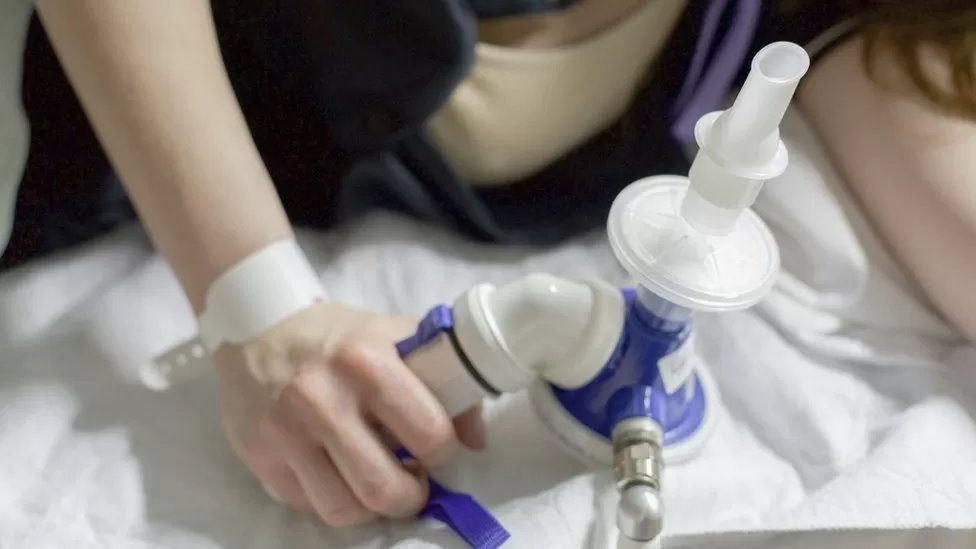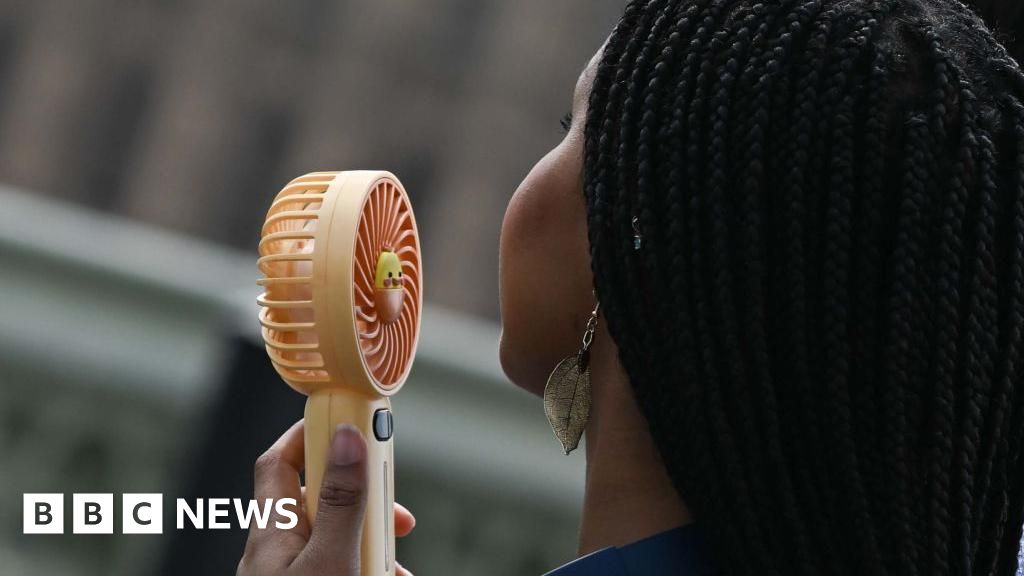ARTICLE AD BOX
 Image source, Alamy
Image source, Alamy
A number of NHS trusts and a private hospital have reported nitrous oxide incidents since 2018
By Matt Precey
BBC Look East
Nitrous oxide levels on Watford General Hospital's maternity suite far exceeded legal limits during peak periods, a BBC investigation has found.
In February 2022, air monitoring showed levels of almost 5,000 parts per million (ppm) - 50 times what is safe.
The hospital's trust said it had since installed machines to remove the gas.
It was one of a number of nitrous oxide incidents reported by NHS trusts to the Health and Safety Executive (HSE), Freedom of Information data has shown.
The HSE disclosed the details following a request for its notifications under the Reporting of Injuries, Diseases and Dangerous Occurrences Regulations 2013 (RIDDOR).
There were 11 notifications to the HSE between August 2018 and December 2022 from seven NHS trusts and one private hospital in relation to nitrous oxide - almost all relating to maternity units.
There have been subsequent incidents at Ipswich Hospital and the Princess Alexandra Hospital in Harlow, which fell outside the timescale of the request.
Monitoring has led to a string of NHS trusts suspending the use of Entonox - a mixture of nitrous oxide and air used to assist women in labour with pain relief.
Another of the seven trusts that notified the HSE, Basildon Hospital in Essex, decided to stop administering the gas for a second time last month because of difficulties keeping levels down. At one point during monitoring, levels reached 30 times what is allowed, but staff were not informed until 16 months later.
Ipswich Hospital has recently started using it again, with the Princess Alexandra partially reinstating it.
According to the Harlow hospital, the risk to women giving birth and visitors is negligible as the exposure is relatively short-term and its effects pass quickly.
But staff working in such units face uncertainty due to prolonged periods of time spent in affected areas, with particular concerns over Vitamin B deficiency due to exposure.
NHS bosses acknowledge there is "limited research on the occupational exposure to Entonox, and the long-term health risks this may pose", though at least one expert has played down the risk.
Image source, South Beds News Agency
Image caption,Nitrous oxide levels at Watford General's delivery suite peaked at nearly 50 times the legal limit
At Watford General, monitoring carried out between 21 and 24 February 2022 revealed an average of 350 ppm within its delivery suite, with peak period readings reaching "just below 5,000 ppm".
The legal limit, mandated by the Control of Substances Hazardous to Health (COSHH) regulations, is 100 ppm.
West Hertfordshire Teaching Hospitals' chief nurse, Tracey Carter, said it became aware of issues at Watford in October 2021 - a few months before.
She said: "The infrastructure of our estate means we cannot put a mechanical ventilation system in place, but we have installed machines which effectively remove waste anaesthetic gas from delivery rooms to ensure safety for patients and staff."
Trainees exposed
Image source, Alamy
Image caption,The William Harvey Hospital in Kent where midwifery trainees were tested for nitrous oxide exposure
Meanwhile, the HSE data also showed dozens of midwifery trainees at two hospitals in Kent were potentially exposed to illegal nitrous oxide levels.
Canterbury Christ Church University notified the HSE in relation to 36 of its students on placements at the William Harvey Hospital in Ashford and the Queen Elizabeth The Queen Mother Hospital in Margate.
East Kent Hospitals Trust informed the university that blood tests had confirmed their staff had been "over-exposed" and the university said it was "reasonable to assume our students will have been over-exposed too".
The university told the BBC it took the health and safety of its students "extremely seriously".
After it was notified, it said it "immediately moved placement students from the labour ward whilst we assessed the information we had been provided".
"On the basis of assurances provided by [East Kent Hospitals], students have now fully returned to their placements," it added.
East Kent Hospitals Trust said it suspended the use of Entonox in the delivery unit at the William Harvey on 24 November 2022.
In a statement, it said "by the end of the following week... the temporary solution was in place", adding "a permanent solution is to be installed during the next two months".
Scrap lorry
In 2018, the Great Western Hospital in Swindon also notified the HSE of an accidental nitrous oxide leak after sampling revealed excessive levels in the delivery rooms.
In 2021, air purification equipment, known as scavenger systems, were installed at the Rushey Birthing Unit in Reading, after readings of 120 ppm and 143 ppm were detected. The ward was also closed temporarily.
At the Spire Hospital in Southampton, two staff members said they had developed hives, a type of skin rash, and burning sensations after "massive amounts" of nitrous oxide were expelled from a tank in May 2022.
And a lorry carrying scrap severed a medical air pipeline as it drove under a bridge at the Northwick Park & St Mark's Hospital in Harrow, discharging 126,000 litres of the gas into the atmosphere.
All have been approached for comment.
Find BBC News: East of England on Facebook, Instagram and Twitter. If you have a story suggestion email eastofenglandnews@bbc.co.uk
Related Internet Links
The BBC is not responsible for the content of external sites.

 2 years ago
81
2 years ago
81








 English (US) ·
English (US) ·